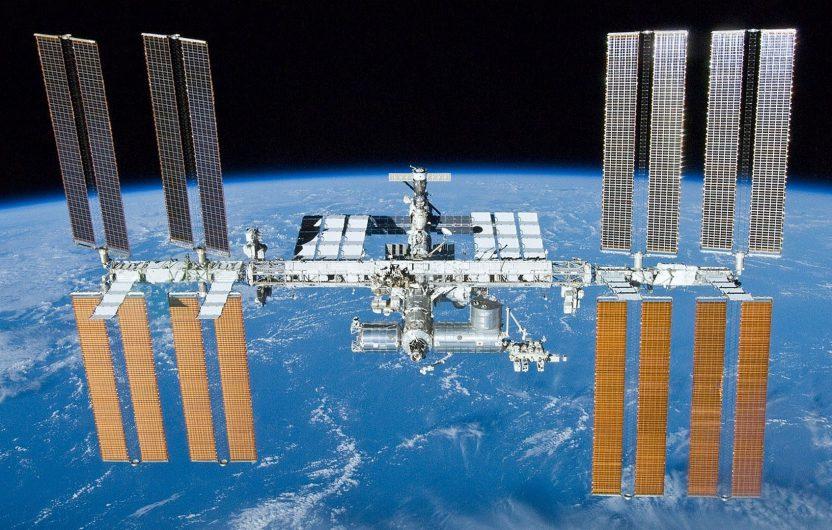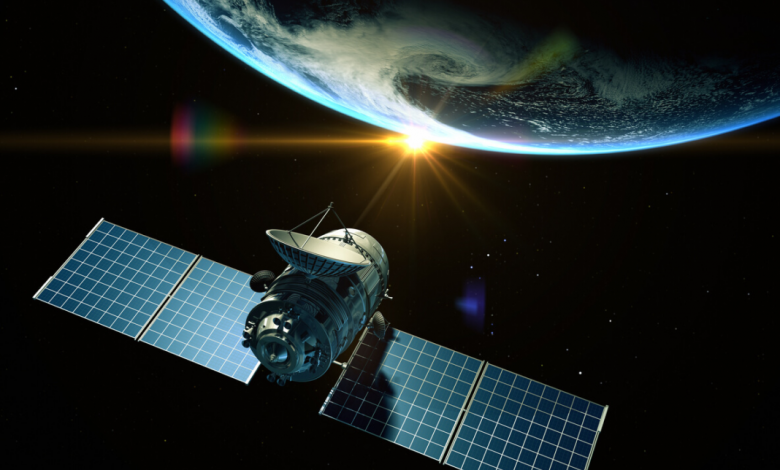China surprises the world.. Generating electricity in space and sending it to Earth
17/10/21 Filed in: Technology
The idea of collecting energy in space and sending it back to Earth may sound like science fiction, but according to the Chinese government's plan, a solar power plant in space will provide 1 megawatt of electricity by 2030.


By 2049, the total capacity of the plant or plants will increase to 1 gigawatt, which is equivalent to greater than the capacity of a nuclear reactor.
The Chinese government has announced a unique and huge project that it has already started, and experts have confirmed that this project will lead to the provision of large amounts of electricity, at a low cost and without any deposits, energy waste or carbon emissions.
The idea of the project is to place a large group of solar panels in outer space, in order to generate energy and send it in huge quantities to Earth.
Needless to say, the biggest problem for a floating power station is figuring out a way to send energy back to Earth, and the scientists behind the project are still studying that part.
But for now, the plan is to put solar panels in space to capture sunlight and then transmit electricity to a facility on Earth in the form of a microwave or laser.
From there, the electricity can be used as if it had been generated by conventional, earthly means.
The amount of electricity equivalent to a nuclear power plant
Experts say that when solar energy starts operating in space, it will send a huge amount of clean electricity to the country of China, and this electricity is equal to a nuclear power plant.
The idea of establishing a space electric power station was first proposed by the writer "Isaac Asimov" in 1941, and at that time this idea was discovered by several countries, including Britain and America.
At first, the production of electric power starts with only one megawatt, but in 2049, gigawatts of electric power will be produced, and this amount of energy is equivalent to the largest nuclear power reactor in China.
One of the advantages of this project is that it is in space, meaning in a place where there are no clouds and changes in climatic conditions, so it maintains the continuity of its work in the production of electricity and does not stop under any circumstances.
Space power station costs
There is no accurate information about the cost or operation of this project, and it is expected to be operational in 2035, and to grow and develop by 2050.
Quoting meteorological departments: About a third of the days of Chongqing in southwest China are foggy throughout the year, which makes it unfit for a solar energy project.
According to information from the Chinese government, it has established a test center for the space power station, and a budget for this project was set by the "National Solar Energy Program" of approximately $15.4 million three years ago.
Since they were not based on accurate figures on the cost of the project and the safety of the environment, work on this project was postponed to allow time for discussions and sound solutions.
Last June, it was announced the resumption of work on the project, setting a plan for the completion of its construction at the end of this year.
The scientists supervising this project also confirmed that the presence of a group of solar panels that revolve around 22,400 miles above the earth in a fixed orbit will lead to the acquisition of sunlight permanently, because it revolves around the sun in a fixed orbit.
The reason the power plant was built in space, not on Earth
This is due to the ineffectiveness of the solar power plant on Earth because it operates only during the day, unlike the presence of a station in space, because it draws solar energy continuously.
In addition, a solar power plant is inefficient because the atmosphere blocks or absorbs nearly half of the energy in sunlight.
The idea of building a solar station in space dates back to the 1960s.
Many scientists and engineers began seeking to implement this idea and found that its application at an altitude of 36000 km enables this station to draw heat from the sun directly and throughout the day.
Energy can be preserved and not lost by transmitting it in the form of microwaves of high frequency.
Suggestions were made for different forms of solar power stations all over the world, but these suggestions remained in theory and were not implemented in practice; Because of facing major technical challenges.
Project Challenges
Some Chinese researchers believe that for the implementation of this project and its success, it is necessary to prove that wireless power transmission works over long distances.Although the idea of the inventor Nikola Tesla spread at the end of the nineteenth century, the technology of this era was only able to activate short-term applications such as wireless chargers for mobile phones.
Chinese researchers were able to receive wireless electricity sent from a balloon 300 meters above the ground, and they seek to increase it to more than 20 kilometers through a balloon that collects solar energy from the stratosphere.
According to some recent studies in China, the safety risks of the space solar power station cannot be neglected.

When massive solar panels turn to chase the sun, for example, they can produce small but continuous vibrations in the microwave radiation gun which can cause a performance imbalance.
Therefore, "Space Farm" would need a highly sophisticated flight control system to maintain its target in a small spot on Earth.
Another danger would be radiation. According to one of the calculations made by a research team of Jiaotong University in Beijing last year, residents could not live within 5 kilometers from the ground receiving station of the Chinese 1 GW solar power plant in space.
Also, even a train that is more than 10 kilometers away can have problems such as a sudden loss of connection because the active microwave frequency will affect the Wi-Fi.
The importance of the space solar power station project
Initially the project faced great opposition, but after China launched Its desire to conserve the environment and decarbonize by 2060 has been greatly supported by the energy sector.
The solar space project will be a strategic solution, because solar energy and wind energy are considered non-fixed sources.
Podcast
